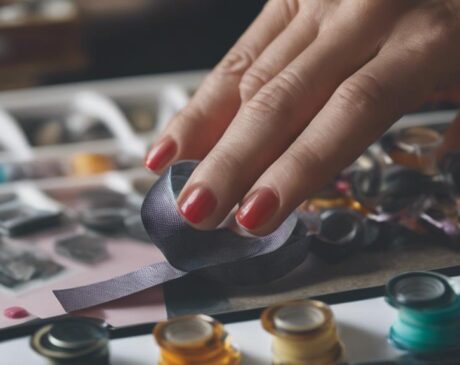What Is Nail Bed?
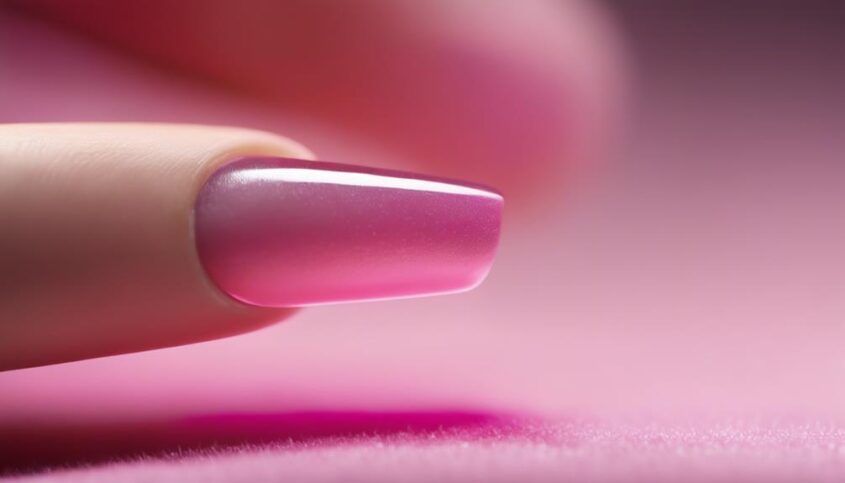
The nail bed is located beneath the nail plate and contains blood vessels, nerves, and skin cells. It supports nail growth, repair, and sensory feedback by providing a rich blood supply. Essential for protecting fingertips, the nail bed produces keratinocytes for strength and nourishment, supporting overall nail well-being. Proper circulation, nail care habits, and avoiding harmful practices are crucial for optimal nail bed health. Nail bed disorders like paronychia and ingrown nails require prompt treatment and preventive measures. Exploring further about nail bed anatomy, functions, and care can enhance your understanding of nail health.
Key Takeaways
- The nail bed is beneath the nail plate and contains blood vessels, nerves, and skin cells.
- It produces keratinocytes for the nail plate and maintains a rich blood supply for growth.
- Nail bed health is vital for nutrient delivery, nail growth, repair, and protection.
- Proper circulation supports healthy nails by delivering oxygen and nutrients.
- Factors like nutrition, trauma, and lifestyle choices can impact nail bed health.
Anatomy of the Nail Bed
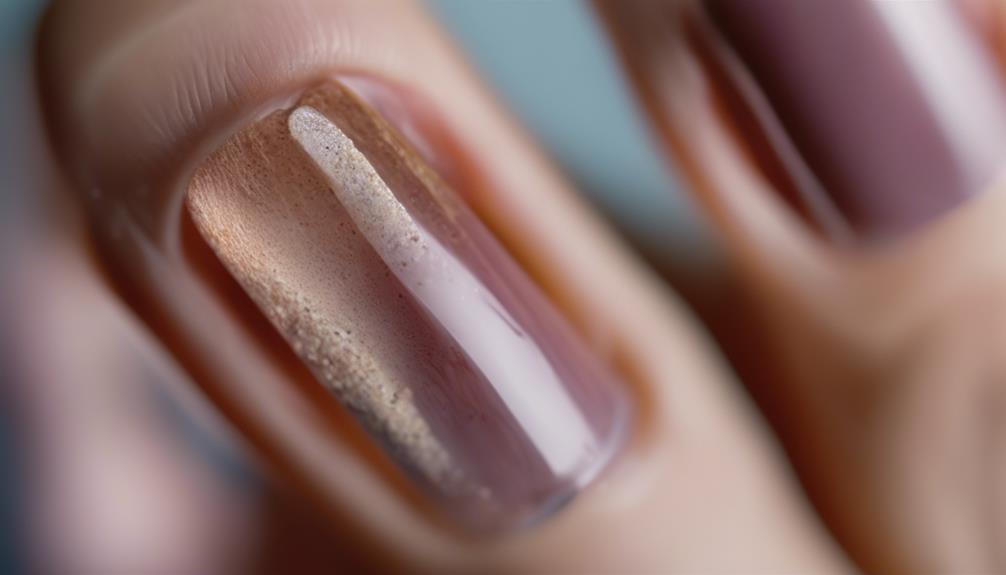
The nail bed is a specialized structure located beneath the nail plate, playing a crucial role in supporting and nourishing the nail. Comprising a dense network of blood vessels, nerves, and specialized skin cells, the nail bed is a dynamic tissue that contributes to the overall health and appearance of the nail.
One key feature of the nail bed is its rich blood supply, which provides essential nutrients and oxygen to the growing nail cells. This vascular network not only supports nail growth but also aids in the repair of any damage sustained by the nail plate. Additionally, the nerve endings present in the nail bed help in providing sensory feedback, allowing us to sense touch, pressure, and temperature changes.
Furthermore, the nail bed's unique structure allows it to adhere firmly to the underside of the nail plate, providing stability and strength to the nail. This close interaction between the nail bed and nail plate is vital for maintaining the integrity of the nail and protecting it from external damage.
Functions of the Nail Bed
Playing a pivotal role in maintaining nail health and integrity, the nail bed serves essential functions essential for overall nail well-being. The nail bed is a crucial component of the nail unit and is responsible for supporting nail growth, providing nourishment, and aiding in the protection of the fingertips. Below is a table highlighting the key functions of the nail bed:
| Function | Description | Importance |
|---|---|---|
| Nail Plate Production | The nail bed produces keratinocytes that form the hard structure of the nail plate. | Essential for nail growth and strength. |
| Blood Supply | The nail bed contains a rich blood supply that delivers oxygen and nutrients to the nail. | Vital for maintaining nail health and vitality. |
| Sensory Perception | The nail bed is highly sensitive and helps in detecting pressure, temperature, and pain. | Plays a role in protecting the fingertips from harm. |
Understanding the multifaceted functions of the nail bed underscores its importance in maintaining healthy and strong nails.
Importance of Nail Bed Health
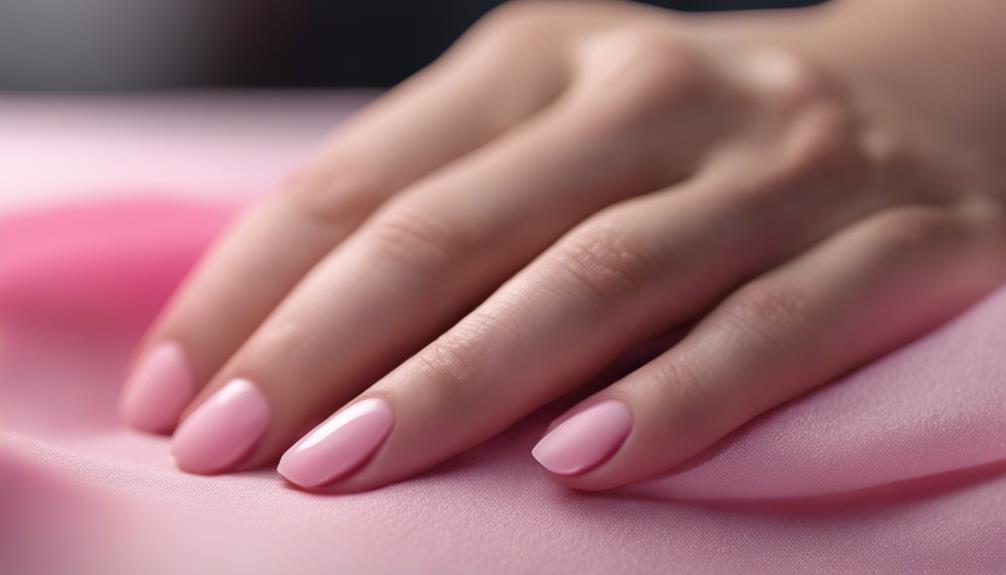
Maintaining the health of your nail beds is crucial in ensuring the overall wellbeing of your nails. The structure of the nail bed plays a significant role in supporting nail growth and strength. Proper circulation to the nail bed is essential for delivering nutrients and oxygen, promoting healthy nail growth and appearance.
Nail Bed Structure
A fundamental aspect of understanding nail health lies in comprehending the intricate structure of the nail bed. The nail bed is a crucial component of the nail unit, providing support and nourishment to the nail plate. Composed of specialized epithelial cells and a rich network of blood vessels, the nail bed plays a vital role in maintaining nail integrity and health. The matrix, located at the base of the nail bed, is responsible for producing keratinocytes that form the hard nail plate. Additionally, the cuticle, a thin layer of skin at the base of the nail, acts as a protective barrier against external pathogens. Understanding the complex structure of the nail bed is essential for promoting overall nail health and well-being.
Nail Bed Circulation
Adequate circulation within the nail bed is paramount for maintaining optimal nail health and vitality. The nail bed circulation plays a crucial role in ensuring that the nails receive essential nutrients and oxygen for growth and strength. To better understand the importance of nail bed circulation, consider the following:
- Efficient blood flow promotes nail growth and strength.
- Proper circulation helps in the delivery of nutrients to the nail matrix.
- Enhanced circulation aids in the removal of toxins and waste products from the nail bed.
- Healthy blood flow reduces the risk of nail disorders and infections.
- Optimal circulation contributes to the overall appearance and health of the nails.
Ensuring good nail bed circulation is key to promoting strong, healthy nails.
Factors Affecting Nail Bed
Various internal and external factors can significantly impact the health and appearance of the nail bed. Internally, factors such as nutritional deficiencies, hormonal imbalances, and underlying health conditions like psoriasis or fungal infections can affect the nail bed's health. Externally, exposure to harsh chemicals, trauma from injuries, improper nail care practices, and frequent use of artificial nails can also play a role in compromising the nail bed's well-being.
Moreover, lifestyle choices like smoking, poor hydration, and repetitive exposure to water or detergents can contribute to nail bed problems. Additionally, age-related changes, genetic predispositions, and certain medications can influence the nail bed's condition.
Understanding these factors is crucial for maintaining healthy nail beds. By addressing these influences and adopting proper nail care habits, individuals can promote optimal nail bed health and minimize the risk of developing issues that affect the nails' appearance and function. Prioritizing nail bed health through awareness and proactive care can lead to stronger, more resilient nails in the long run.
Tips for Nail Bed Care
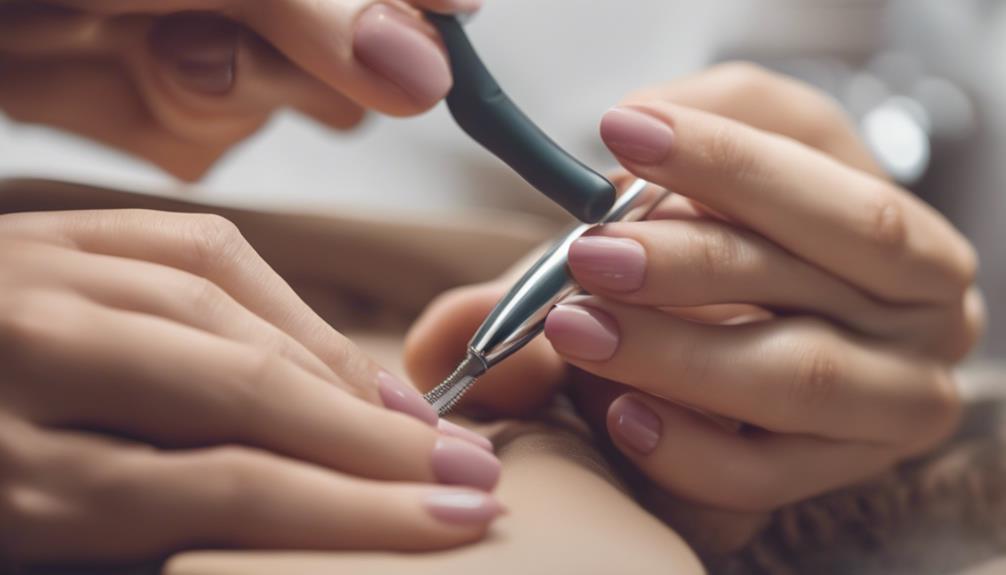
To ensure optimal nail bed health and minimize the risk of issues affecting the nails, implementing effective nail care practices is key. Proper nail bed care not only enhances the appearance of the nails but also promotes overall nail health. Here are five innovative tips for maintaining healthy nail beds:
- Keep nails clean and dry: Moist environments can lead to bacterial or fungal infections.
- Trim nails regularly: Maintaining a proper nail length can prevent ingrown nails and other issues.
- Moisturize the nail bed: Hydrated nail beds are less prone to cracking and peeling.
- Protect nails: Use gloves while doing chores to prevent damage from chemicals or rough surfaces.
- Avoid nail biting and picking: These habits can damage the nail bed and increase the risk of infections.
Nail Bed Disorders and Treatments
Within the realm of nail bed care, understanding common nail bed disorders, exploring effective treatment options, and learning preventative measures is crucial for maintaining healthy nails. By addressing issues such as infections, trauma, or nail bed inflammation promptly with suitable treatments, individuals can prevent complications and promote nail health. Stay informed about the signs of nail bed disorders, and consult with a healthcare professional for personalized advice on managing and treating these conditions.
Common Nail Bed Disorders
Exploring the array of nail bed disorders provides insight into the intricate conditions that affect this crucial part of the nail anatomy. Common nail bed disorders can present a variety of challenges, each requiring specific attention and care. Here are five noteworthy nail bed disorders to consider:
- Paronychia: Inflammation of the nail fold often caused by bacterial or fungal infections.
- Onycholysis: Separation of the nail from the nail bed, leading to pain and potential infection.
- Beau's lines: Indentations that run across the nails, signaling a disruption in nail growth.
- Ingrown nails: Nails that grow into the surrounding skin, causing discomfort and inflammation.
- Nail psoriasis: A condition where the nail bed is affected by psoriasis, leading to changes in nail color and texture.
Effective Treatment Options
Effective treatment options for nail bed disorders encompass a range of targeted interventions tailored to address specific conditions and promote optimal nail health. Advanced treatments such as laser therapy offer innovative solutions for nail fungus, effectively targeting the infection while preserving the integrity of the nail bed. Topical antifungal medications paired with oral antifungal drugs provide a dual-action approach for stubborn infections, ensuring comprehensive treatment. In cases of severe nail trauma or ingrown nails, surgical interventions like nail avulsion or matrixectomy may be necessary to alleviate pain and prevent further complications. Additionally, regular application of moisturizers and cuticle oils can help maintain nail bed health and prevent common issues. Consulting with a dermatologist or nail specialist can guide individuals towards personalized treatment plans for lasting nail wellness.
Preventing Nail Bed Issues
To maintain healthy nail beds and prevent potential disorders, proactive care and proper maintenance routines play a crucial role in preserving the integrity of the nails. Here are five innovative ways to prevent nail bed issues:
- Regularly moisturize the nail beds to keep them hydrated and prevent dryness.
- Avoid using harsh chemicals or excessive nail polish, opting for nail-friendly products.
- Practice good nail hygiene by keeping nails clean and trimmed to prevent infections.
- Use gloves when engaging in activities that may damage the nails, such as gardening or cleaning.
- Maintain a balanced diet rich in vitamins and minerals to promote overall nail health.
Frequently Asked Questions
Can Nail Bed Health Affect the Growth Rate of Nails?
The health of the nail bed plays a crucial role in the growth rate of nails. Optimal nail bed health promotes strong, fast-growing nails, while issues like infections or trauma can impede this process, affecting overall nail growth.
Is It Possible to Have a Nail Bed Disorder Without Any Visible Symptoms on the Nails?
It is possible to have a nail bed disorder without visible nail symptoms. Internal issues like infections, trauma, or medical conditions can disrupt nail bed health, impacting nail growth and appearance. Consulting a healthcare professional is crucial for accurate diagnosis and treatment.
Are There Any Specific Foods or Supplements That Can Improve Nail Bed Health?
Enhancing nail bed health involves consuming nutrient-rich foods like leafy greens, nuts, and seeds. Supplements such as biotin, collagen, and vitamin E may also promote nail strength. These dietary choices can contribute to overall nail wellness and appearance.
How Long Does It Typically Take for a Nail Bed Injury to Heal?
The healing time for a nail bed injury typically varies based on the severity of the damage. Minor injuries may heal within a few weeks, while more severe cases could take several months to fully recover.
Can Stress or Emotional Factors Impact the Health of the Nail Bed?
Stress and emotional factors can indeed impact the health of the nail bed. Emotional well-being plays a vital role in overall health, potentially affecting nail growth and quality. Maintaining a balanced lifestyle and managing stress can promote nail health.


